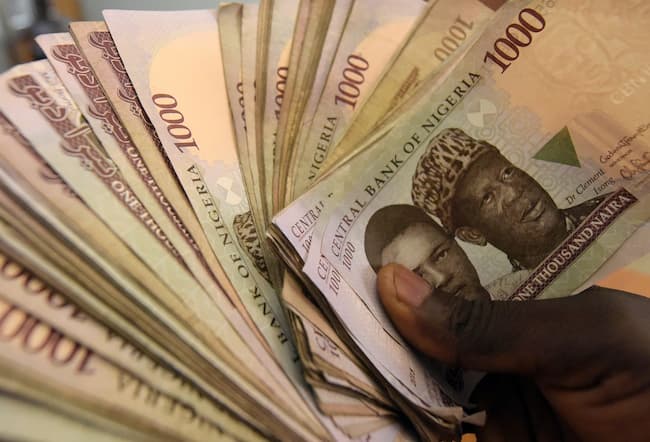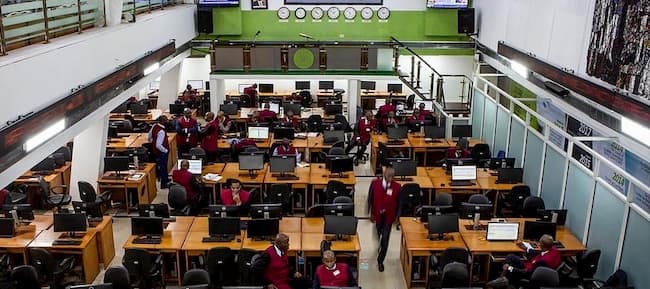Despite the liquidity crunch in the financial sector, deposit money banks and merchant banks’ deposits with the Central Bank of Nigeria (CBN) increased to N579.27 billion in June 2023, representing an increase of 25.4 per cent when compared to N461.85 billion in May 2023.
The reported N579.27 billion deposit with CBN is 118.34 per cent Year-on-Year increase when compared to N265.31 billion banks and merchant banks deposit in June 2022.
In a total, banks and merchant banks have deposited N2.99 trillion in half year of 2023, representing an increase of 32.5 per cent from N2.26 trillion in first half of 2022.
DMBs and merchant banks through the Standing Deposit Facility (SDF) on daily basis deposit excess funds with the apex bank at an applicable interest rate of 4.5 per cent at an asymmetric corridor of +100/-700 basis points around the 18.5 per cent Monetary Policy Rate (MPR).
SDF is a monetary policy operation used by CBN’s around the world to absorb deposits from banks, without involving the use of government securities as collateral in return.
In the last six months of 2023, the trend revealed that banks’ deposit with CBN increased with less borrowing, despite the demand to meet the 65 per cent Loan-to-Deposit (LDR) requirement of the CBN.
Analysts attributed the decline in SLF to cash scarcity, stressing that banks and merchant banks were no longer enjoying the usual cash deposits that normally come from businesses and individuals that generate significant amount of cash for them to deposit with CBN.
Commenting, the Chief Executive officer, Wyoming Capital and Partners, Mr. Tajudeen Olayinka stated, “Economy has suffered so much from the problem created by CBN’s mismanagement of currency redesign program and deliberate cash scarcity. A program that was expected to be positive suddenly turned negative because CBN did not understand the dynamics of deliberate cash scarcity as an unusual monetary management tool.”
According to Olayinka, “The most significant factor is the increasing level of threat in the environment of business in Nigeria, arising from: insecurity, supply chain problems, rising inflation, and poor purchasing power, low level of productivity, rising unemployment, liquidity overhang and paucity of risk-free financial instruments.”
He added that, “As a result, most banks prefer to be debited by CBN for running short of LDR limit, as against extending credit to businesses that are finding it difficult to survive. It is all about managing risk.
“When CBN mop-up liquidity, DMBs will first resort to the intervention before they build capacity again. With the increasing inflation rate, the CRR debit is a means to reduce banks ability to extend access cash into the system and control the volume of money in circulation.”
Also, the Vice President, Highcap securities Limited, Mr. David Adnori explained that banks and merchant banks are sceptical about the new government economy directions, stressing that lending to key sectors call for caution.
The CBN had in July 2019 directed that banks’ daily deposits placement through its SDF should not exceed N2 billion, stressing that any daily deposits above the stipulated amount will not attract interest payments.
The CBN had noted in its 2019 guidelines that the N2billion deposit represents 73 per cent reduction from the previous limit of N7.5 billion introduced way back in 2014.
In November 2014, the CBN said it observed that banks and discount houses preferred to keeping their idle balances in the SDF with the CBN.
Unfortunately, this preference contributed to the restraining of the financial intermediation process, the reason the CBN opted to review the guidelines for the operation of the standing deposit facility.
The review recommended that daily placements by discount houses and banks at the SDF should not exceed N7.5 billion.
Data from the CBN official website revealed that banks and merchant banks borrowing dropped by 88 per cent to N235.06 billion in June 2023 from N1.93 trillion in June 2023.
The CBN lends money to banks and merchant banks through the SLF at interest rate of 100 basis points above the MPR.
Standing facilities (lending and deposit) are instruments of liquidity management, according to the CBN. They serve as avenues to invest surplus funds overnight and to square up whenever the system is short at the end of each business day.














